Transcript
This is a photo of the early PayPal team, arguably the most accomplished tech mafia ever.
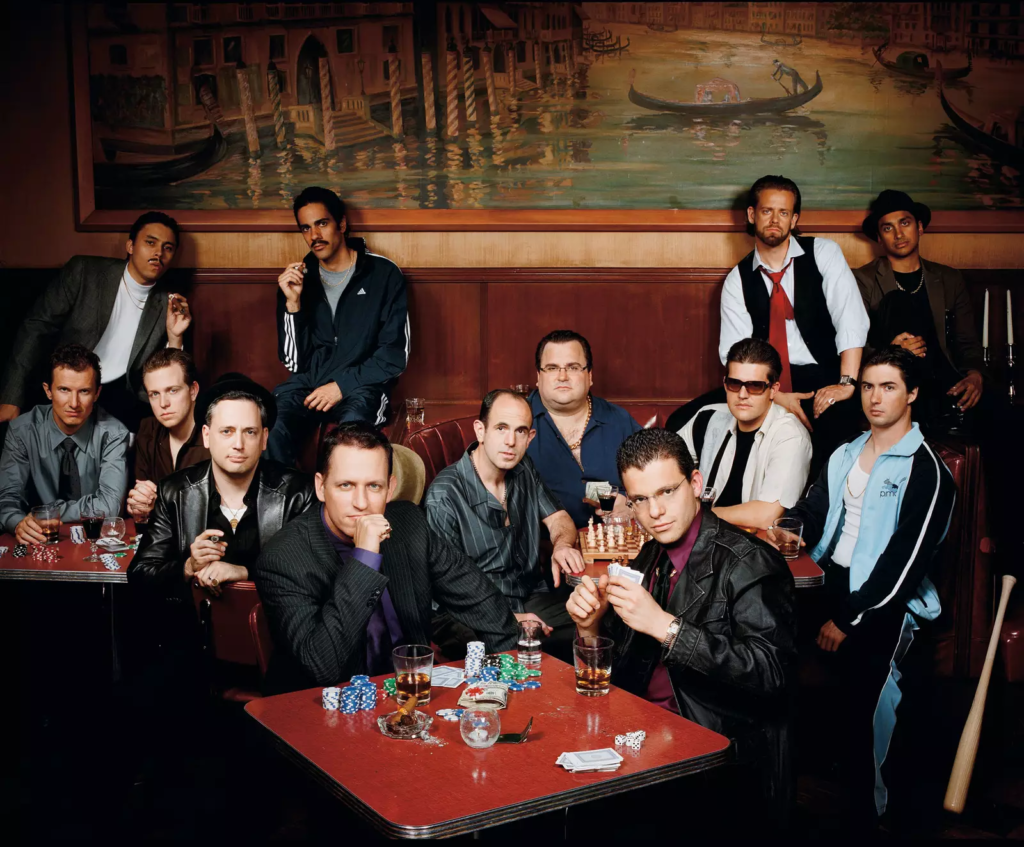
Not only did they build a company worth over $100 billion, early PayPal employees founded YouTube, Yelp, LinkedIn, Tesla, SpaceX, and other startups now worth over $200 billion.
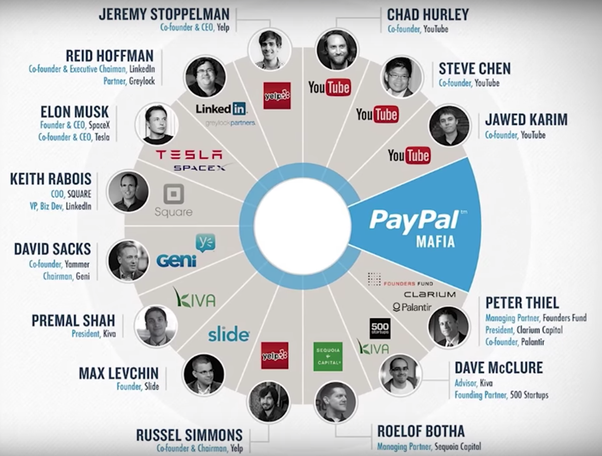
How did PayPal hire such great people?
PayPal co-founder Peter Thiel said, “I hired friends from Stanford, and Max brought in people from the University of Illinois. It basically started by hiring all these people in concentric circles.”
When I joined PayPal in 2002, it was also through a friend who worked there.
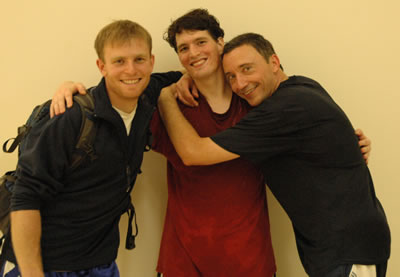
Out of all the ways to find great employees, the best by far is referrals. Research consistently shows that referred candidates are more affordable, higher-quality, faster to hire, and stay longer. This video is about how to create a good referral program.
1. Make referrals easy.
Clearly explain how referrals are made and don’t require your team to submit a lot of info. Let them give HR a resume or even just a name, with a short description of why the candidate is good, and take it from there. Everyone who makes a referral should then get a follow-up, especially on why a candidate was rejected, to make future referrals better.
2. Offer your employees a referral bonus.
One study of over 700 companies found the average bonus was between $1,000-$3,000, and often more for hard-to-fill roles. This is much less than the typical fee paid to recruiters and usually requires hires to stay 3-6 months before being paid.
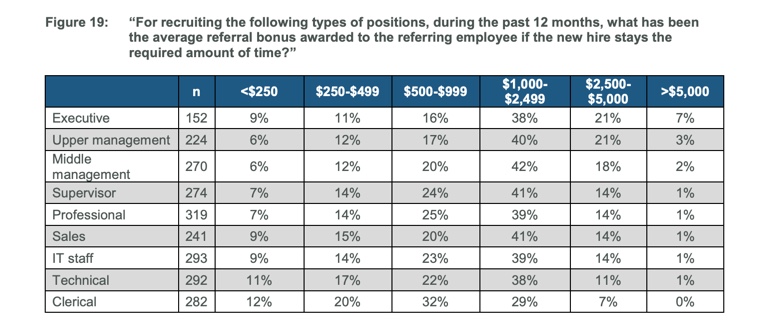
3. Determine who can refer.
It’s standard for most employees to qualify. Some companies exclude executives and HR people because they have more hiring control, but I prefer trusting them. I like including partners, vendors, customers, and anyone else with a stake in your business.
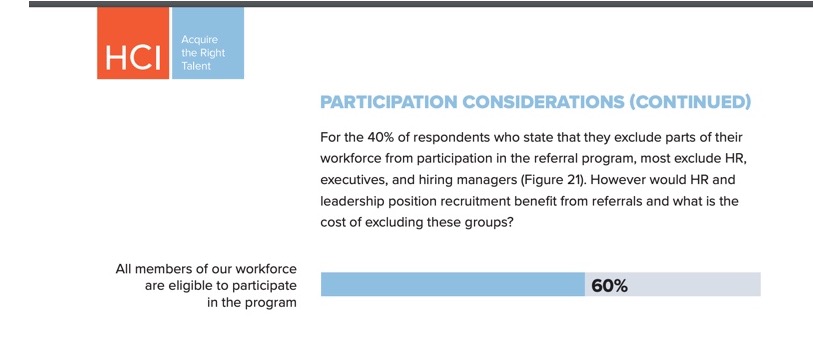
4. Make sure everyone in the company knows your open roles.
Mention the openings in staff meetings or an internal newsletter. When Google wanted to increase referrals, they tried doubling their bonuses, requiring fewer interviews, and reducing response time to 48 hours. None of these worked.
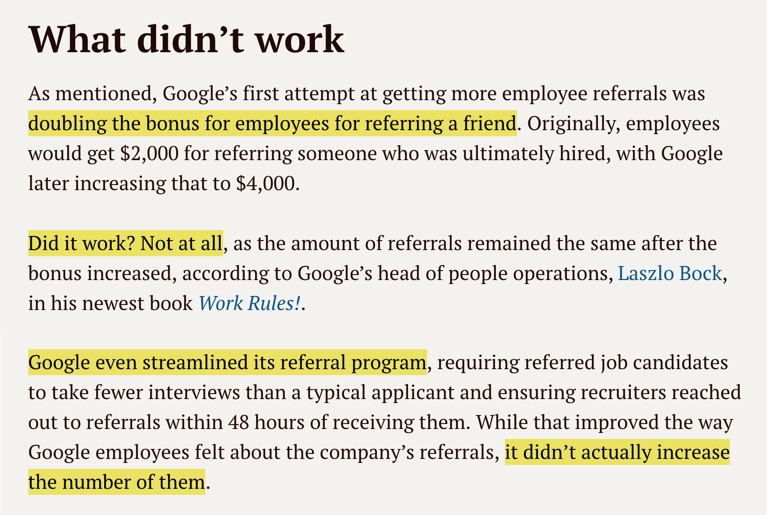
What did work was reminding employees of open roles and holding recruiting jams with food and music, where Googlers would look through their contacts with recruiters waiting nearby.
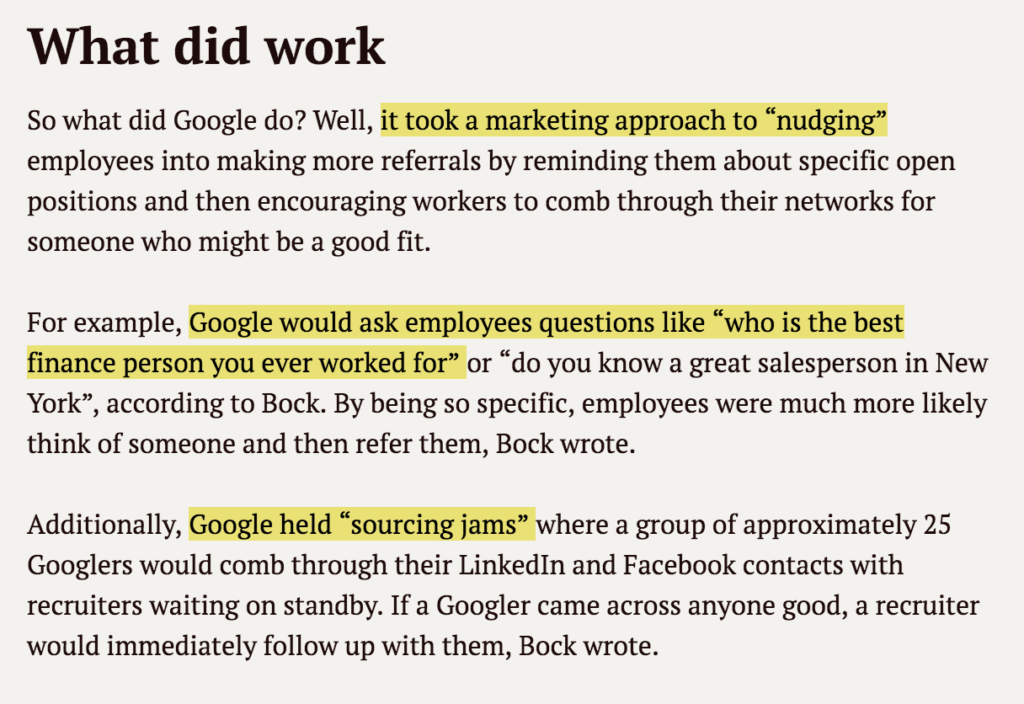
Booking.com also used food to get referrals. When they were struggling to hire Portuguese-speaking agents, the recruiting team brought in Portuguese food for the office and left referral cards. And it worked!
5. Track metrics.
Your applicant tracking system (ATS) can track how many referrals are hired, retention rate, what % of your team is referring, and whether any referrers stand out.
A survey of over 300 startups by Lightspeed found that 30% of employees were hired through referrals, so consider shooting for that target.
There is a risk with referrals: you don’t want to create a monoculture where everyone is the same.

Hire people who share your values, but value people with different skills and experiences. You’ll get more perspectives to solve problems.
Those are five steps to creating a referral program. Build a good one and you can start creating a mafia of your own!
